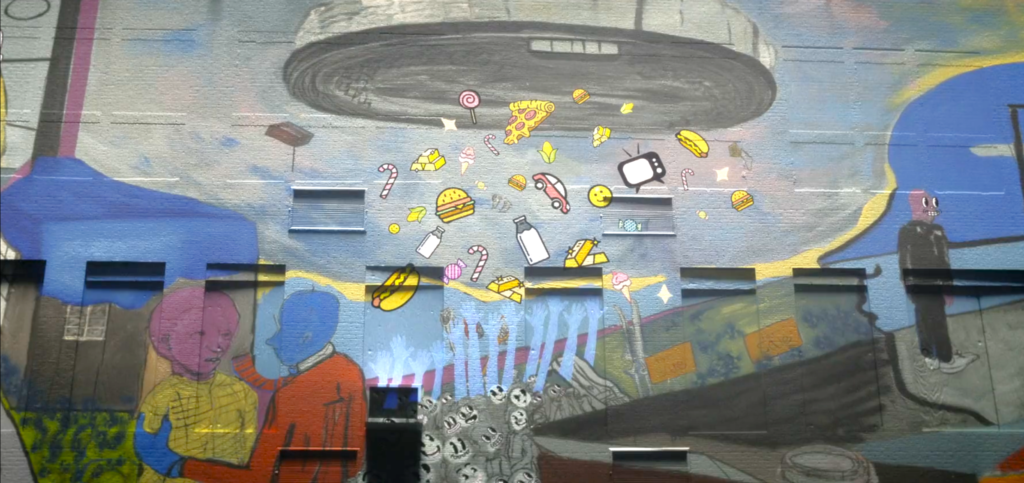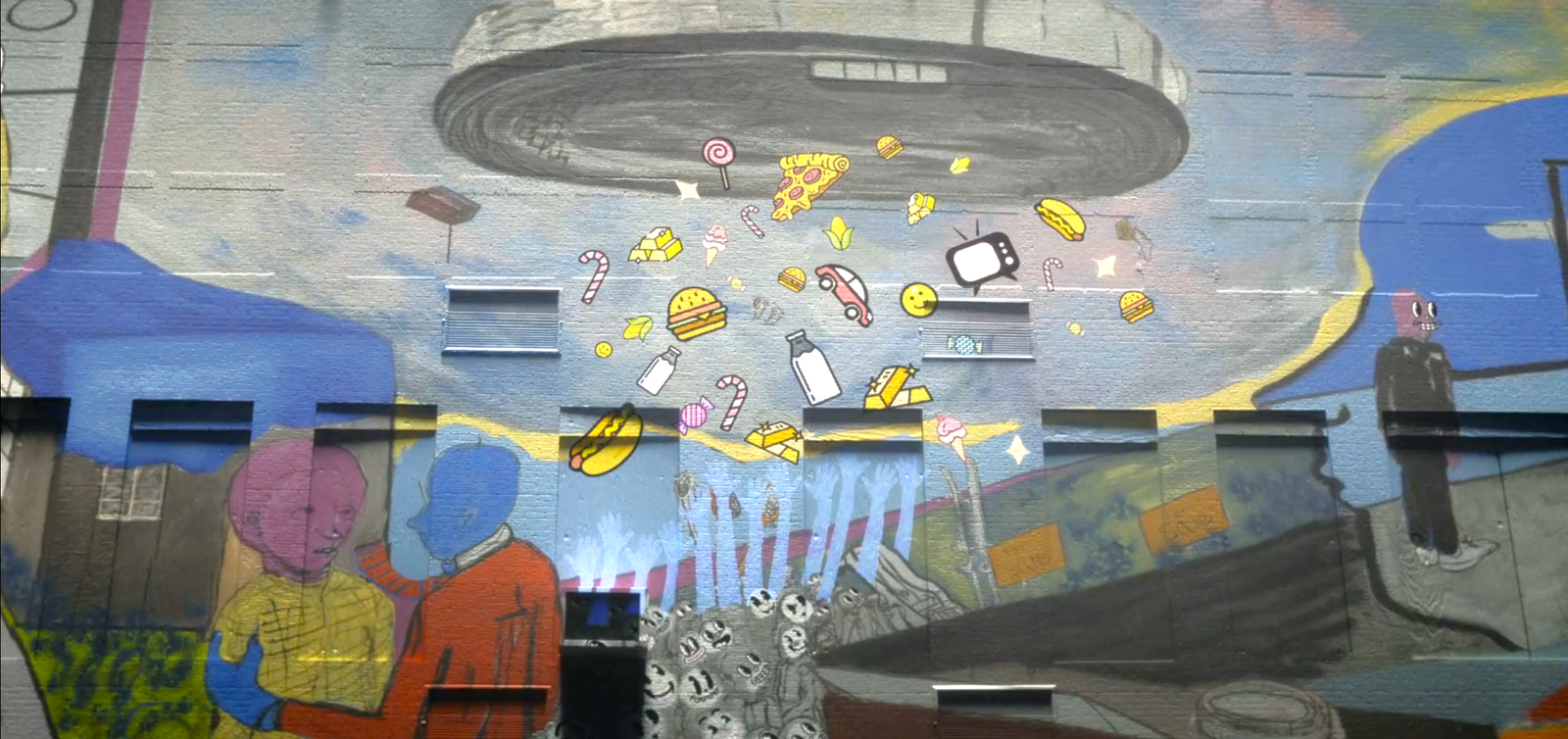On the eastern shore of Lesbos, Greece—where waves have washed up stories of loss and survival for nearly a decade—stands a crumbling concrete wall. Once part of an abandoned warehouse, the wall is now a living canvas, a mosaic of memory, grief, and resistance. It is here that refugee children and young artists from Syria, Sudan, and Afghanistan come to paint what they cannot always speak.
The wall belongs to no one, and yet, it has become sacred ground for many.
“We didn’t ask for permission,” says Zahra, a 19-year-old Afghan painter, her hands stained with cobalt blue. “We just started painting. Because we needed to.”
Zahra arrived in Lesbos three years ago with her younger brother. They fled Kabul after their parents were killed in a bombing. She had never painted before. “I used to write poetry,” she says. “But here, words were too soft for what we saw.”
Art Not Aid: A Movement is Born
The mural project began informally in 2021 under the name Art Not Aid, when a Greek volunteer named Eleni began bringing sketchbooks and crayons to the refugee camp’s children. What started as a simple act of kindness transformed into an organic movement when older youths—many with no formal art training—began creating full-scale wall paintings around the camp and nearby ruins.
“The colors came before the therapy,” Eleni explains. “We realized that painting was their way of processing trauma, of reclaiming their space.”
Soon, donated brushes, rollers, and cans of leftover paint began arriving from local stores and artists in Mytilene. The walls turned into stories.

Stories in Color
One mural shows a house adrift in an endless sea, its windows glowing with candlelight. Another depicts a woman with no face, carrying a small boat on her back, children curled inside it like sleeping petals. One child painted a tree with shoes hanging from its branches—each shoe labeled with a name and a flag.
“It’s not just art,” Zahra says. “It’s what we remember. It’s what we still carry.”
The paintings don’t shy away from darkness. Some show bodies in the sea. Others show fences, broken hands, burning tents. But even in their harshness, they pulse with life—sunrises, birds, eyes wide open.
From Wall to World
By 2023, Art Not Aid had become more than a project—it became a traveling exhibition. Curators from Athens invited the young artists to recreate sections of the murals on canvas. The exhibit opened at a small gallery in Exarchia and drew hundreds of visitors. Later, it traveled to Brussels, supported by European cultural institutions.
Zahra, for the first time in her life, flew on an airplane to attend the opening. “They called me a refugee artist,” she says, smiling with a trace of irony. “I just painted what I had no words for.”
Several of the artists have since resettled in mainland Greece, Germany, and the Netherlands. But the wall in Lesbos remains, weathered by rain and wind, still visited by new arrivals. Some add to it. Others simply sit in front of it and look.
A Living Archive
Today, Art Not Aid is also an archive. The group has digitized dozens of murals, recorded oral testimonies, and published a photo book that is now used in education programs across European schools.
Zahra continues to paint. She now leads workshops for newly arrived minors in Athens.
“Art doesn’t fix what happened,” she says, “but it lets us live with it, together.”
Postscript
Lesbos remains a frontline of Europe’s migration crisis. Moria camp, once the largest in Europe, was destroyed by fire in 2020. A new camp was built—more controlled, more distant. But the wall remains, ungoverned and unforgotten.
In a world that often reduces migrants to headlines or statistics, Zahra and her peers remind us: there is power in telling your own story, even if it’s with leftover paint.

